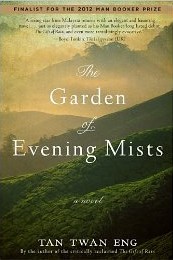|
Our brains, it turned out, take much longer to develop than we had thought.
This revelation suggests both a simplistic, unflattering explanation for teens'
maddening behavior — and a more complex, affirmative explanation as well.
... Our brains undergo a massive reorganization between our twelfth and our twenty-fifth
years.
The brain doesn't actually grow very much during this period.
It has already reached 90 percent of its full size by the time a person is six,
and a thickening skull accounts for most of the head growth afterward.
But as we move through adolescence, the brain undergoes extensive remodeling,
resembling a network and wiring upgrade.
... the brains axons — the long nerve fibers that neurons use to send signals to
other neurons — become gradually more insulated with a fatty substance called myelin
..., eventually boosting the axons' transmission speed up to a hundred times.
Meanwhile dendrites, the branchlike extensions that neurons use to receive signals from
nearby axons, grow twiggier, and the most heavily used synapses — the little
chemical junctions across which axons and dendrites pass notes — grow richer and
stronger. At the same time, synapses that see little use begin to wither.
This synaptic pruning ... causes the brain's cortex — the outer layer of
gray matter where we do much of our conscious and complicated thinking — to become
thinner but more efficient. Taken together, these changes make the entire brain a much faster and more
sophisticated organ.
... these physical changes move in a slow wave from the brain's rear to its front,
from areas close to the brain stem that look after older and more behaviorally basic functions,
such as vision, movement, and fundamental processing, to the evolutionary newer and more
complicated thinking areas up front.
... Stronger links also develop between the hippocampus, a sort of memory directory,
and frontal areas that set goals and weigh different agendas; as a result we get better
at integrating memory and experience into our decisions. ... the frontal areas develop
greater speeds and richer connections, allowing us to generate and weigh far more
variable and agendas than before.
[pp. 157-158]
|
 Links.
Links.
 Booker Prizes.
Booker Prizes.
 Chocolate.
Chocolate.
 Books read.
Books read.
 Best books read in 2014.
Best books read in 2014.

 Best writers of poetry and prose
Best writers of poetry and prose
 Harry Potter;
also Harry Potter en Español.
Harry Potter;
also Harry Potter en Español.
 Why read a book?.
Why read a book?.
 New books on Spirituality
by Pagels, Ehrman, et al.
New books on Spirituality
by Pagels, Ehrman, et al.



